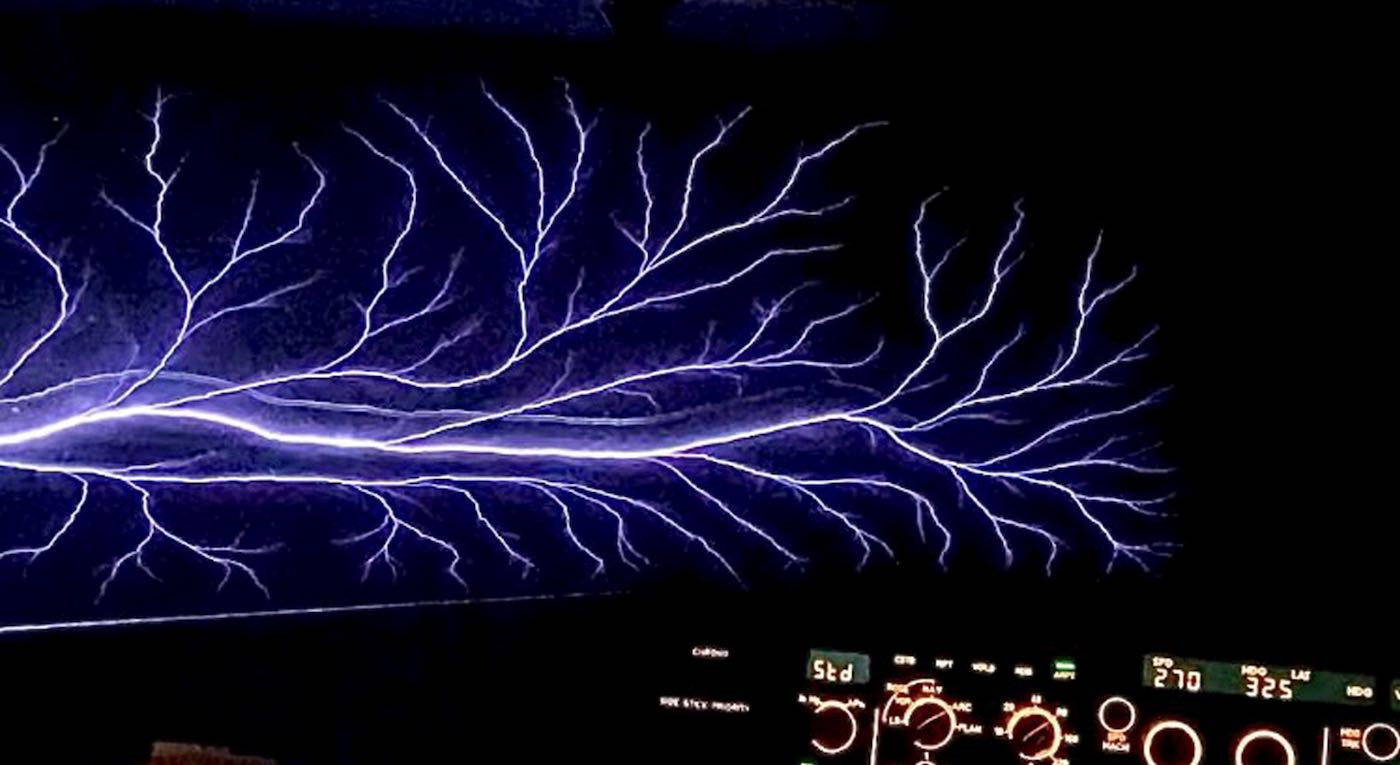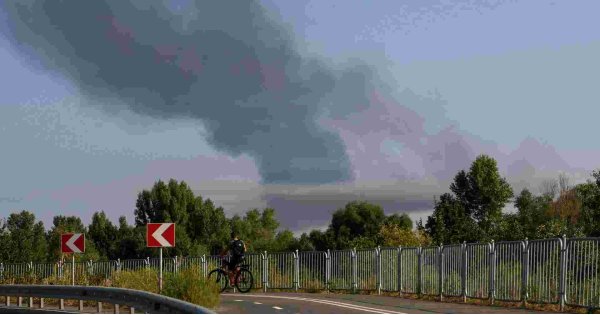It's not just the name of a 1980s Brat Pack movie: St. Elmo's fire is the name given to the bright, sudden lightning flashes that can dance through a cloudy sky when thunderstorms are nearby.
Pilots shared images of the phenomenon that stained the landscape outside cockpit windows as they were evacuated from a Florida air base in preparation for Hurricane Idali on Tuesday.
As the plane flew through the air, streaks of bright blue light seemed to envelope the air outside, and they disappeared as quickly as they appeared.
Sailors have observed this feature of storms for centuries, according to a 2020 article about St.
Elmo's fire from the news office of the Massachusetts Institute of Technology.
And they gave it its name to St. Elmo, or Erasmus of Formia, the Christian saint of sailors.
According to MIT, the phenomenon is known to occur when friction within a storm cloud produces excess electrons and creates an electric field. If this field is strong enough, it can break down surrounding air molecules, turning neutral air into a charged gas or plasma, the paper says.
This usually happens around sharp or sharp objects made of an electrically conductive material, such as radio or cell towers and the wings or windshields of airplanes.
According to the United States National Oceanic and Atmospheric Administration, when the sharp object comes into contact with an extraordinarily high electric field and a large number of electrons, the electrons can glow in various colors, such as a neon mark, resulting in this rare phenomenon.
According to MIT, flashes tend to be concentrated around pointed objects because they interact with the electric field in such a way that electrons are attracted from surrounding air molecules toward the pointed structures, leaving a positively charged plasma blanket just around the sharp object.
This is what causes the blue or purple light to flash wiredly.
Effects of St. Elmo's fire The pilots who caught St.
Elmo's fire outside the cockpit windows this week were probably not in any danger.
St. Elmo's fire is not dangerous on its own.
According to Encyclopedia Britannica, airplanes are equipped with devices designed to reduce the electrical charge on their outer surfaces.
The sailors saw the phenomenon as a sign of good luck, a sign that St. Elmo was guarding their voyage, according to the Encylopedia Britannica.
But NOAA cautions that St. Elmo's fire may be a warning sign because it typically indicates that storms are nearby.
And storms can bring real lightning – which can be fascinating but deadly. Unprotected sailors should be moved to the bunker immediately when this phenomenon occurs, the agency wrote about seeing St. Elmo's fire on a ship.
Lightning can hit a pole within five minutes of it starting to glow.





